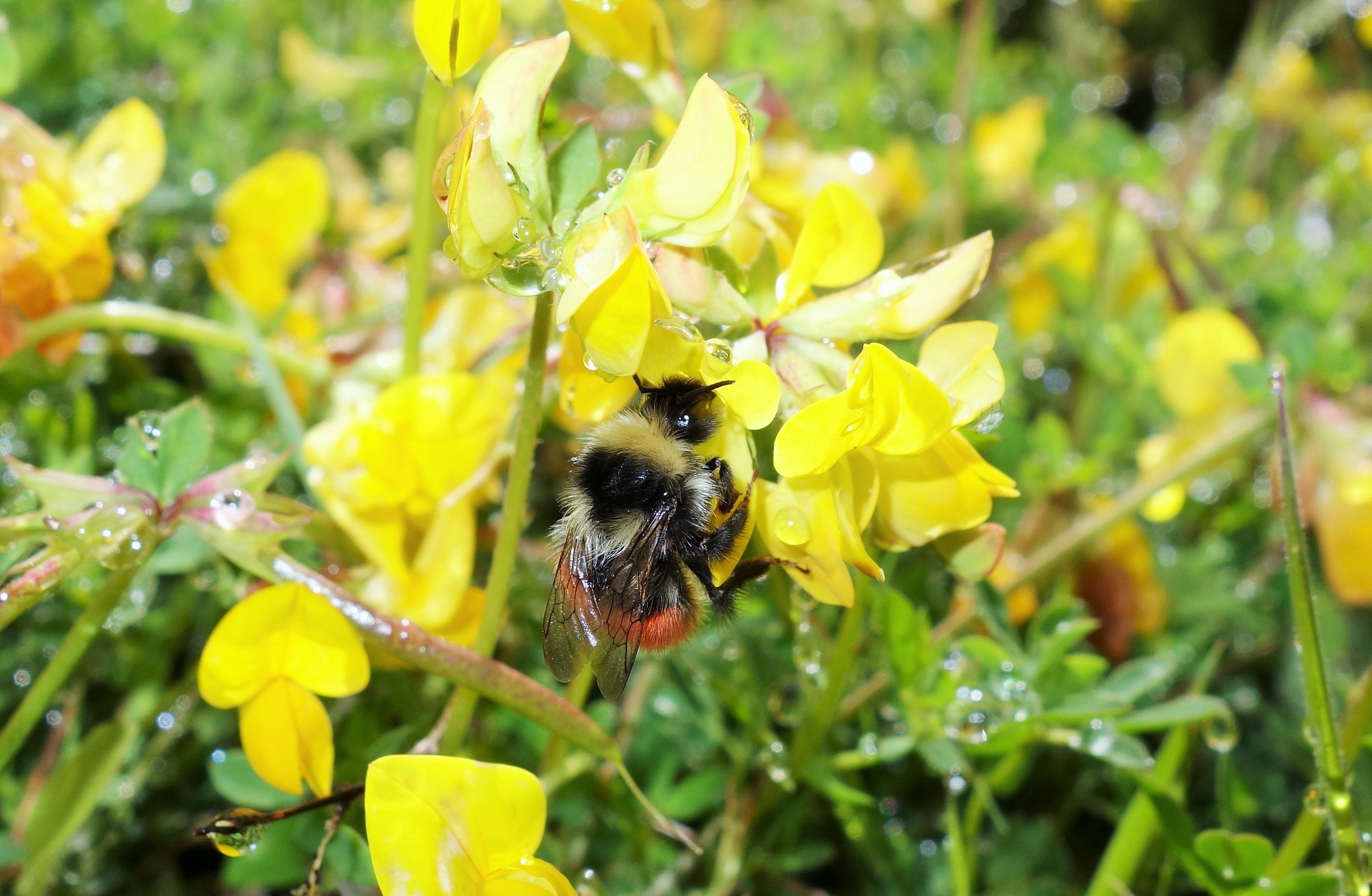I’ve been trying to photograph blaeberry bumblebees but have not been having much luck as they are rather shy creatures that tend to buzz away just as I’m about to press the shutter button of my camera.
Indeed, it is somewhat fortuitous that no-one has stumbled upon my endeavours in the hills above Dunning in southern Perthshire, as it is not unusual for the odd expletive to let rip as yet another bee does a disappearing act. Ah, such is the calming effect of nature!
I’ve become a bit obsessed with blaeberry bumblebees in recent weeks, for I find them most attractive insects with their distinctive orange-furred abdomens and busy behaviour. They are rather small bees and seem particularly attracted to the yellow flowers of bird’s-foot trefoil, which grows in profusion by tracksides in this part of the eastern Ochils.
These delightful wee bees are so-named because while they’ll feed on a variety of wildflowers, they do prefer areas where there is at least some blaeberry around. As such, they tend to be rather scarce and localised in distribution, but in suitable habitat can range up to mountain tops over 3,000ft high.
Unlike honey bees that have nests holding many thousands of workers, the nest of the blaeberry bumblebee is a small affair, often hidden in a rodent burrow and frequently containing fewer than 50 individuals.
Crawling on my hands on knees by the edge of these hill tracks in search of bumblebees has also brought me right up close to a number of small hill flowers that normally go unnoticed. Heath bedstraw is one such find, a sprawling mat-forming plant with the most delicate dusting of white flowers. The tiny purple-blue blooms of milkwort are also frequent here; a plant that was once prescribed by medieval herbalists to nursing mothers for its supposed properties in enhancing the flow of milk.
But it is the blaeberry bumblebees that are the overwhelming draw for me, and after one of my photographic trips, bee fever was gripping so strong that on my return home I ventured into the back garden to see what other types of bumblebees were around.
The most frequent was the aptly named garden bumblebee, sporting a bright yellow collar and midriff band plus a conspicuous white tail. I also spotted a common carder bee and a couple of white-tailed bumblebees.
That is quite a good tally, especially since bumblebee numbers are in overall decline. Such falls should worry us all because bumblebees are so incredibly important to our environment as key pollinators of crops and other plants.
They are also rather endearing creatures, which makes them a ‘window’ into appreciating the vast array of other insect types that live around us. Insects are so easily ignored, yet they are a fundamental engine room of our ecosystem, whether as pollinators, recyclers or providing food for other creatures.
It’s just a pity they are so hard to photograph.
Info
There are 19 different bumblebee species in Scotland but in most areas only six are common and widespread – the white-tailed, buff-tailed, early, garden, common carder and red-tailed bumblebees.










